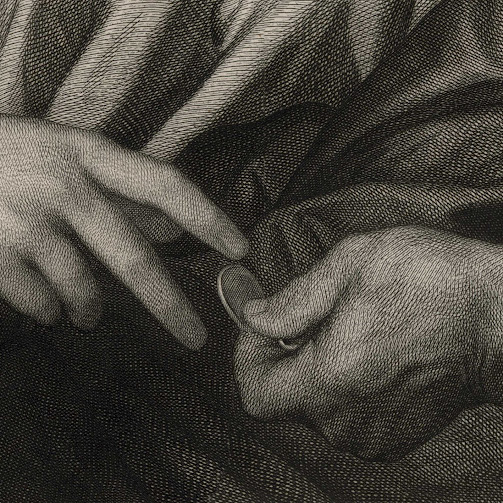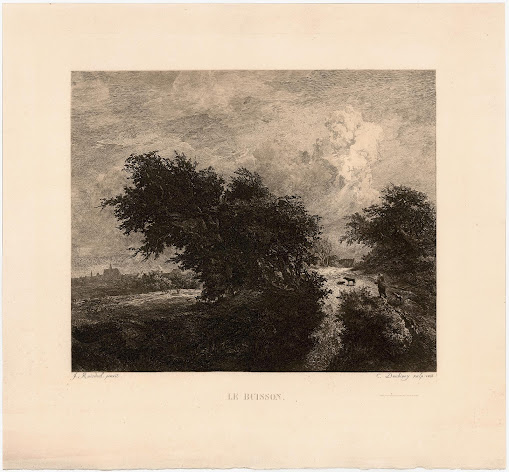Charles Paul Alphonse Bellay (1826–1900)
“Christ a la Monnaie” (aka “Christ has the Coin”; “Christ with the
Denarius”), 1885, plate 53 after Titian’s (aka Tiziano; Tiziano Vecellio)
(1489/90–1576) painting of the same title (1514-15) (first version) in Gemäldegalerie
Alte Meister in Dresden, printed by Charles Chardon (1832–1896) and
published by the Société Française de Gravure (aka Société des Graveurs
au Burin) (fl.1868–)—a society that the BM advises was founded by Henriquel-Dupont
at the Gazette des Beaux-Arts to publish plates for distribution to its members
(see https://www.britishmuseum.org/collection/term/BIOG183625).
Engraving on cream chine collé on heavy wove paper with wide
margins.
Size: (sheet) 63.4 x 48.7 cm; (plate) 41 x 29.6 cm; (chine collé)
38.7 x 27.3 cm; (image borderline) 18.8 x 21.7 cm.
Lettered in plate below the image borderline: (left) “TITIEN PINXT.”;
(centre) “SOCIÉTÉ FRANÇAISE DE GRAVURE/ [stamped in ink] 53/ Imp. Ch. Chardon”;
(right) “CH. BELLAY SCULPT.”
Beraldi 22 (Henri Béraldi 1885, “Les Graveurs du XIXe Siècle:
Guide de l'Amateur d'Estampes Modernes: Bellangé – Bovinet”, vol. 2, Paris, Librairie
L. Conquet, p. 26, cat. no. 22).
Condition: a richly inked and near faultless impression with
generously wide margins. The front side of the sheet (recto) is in near
pristine condition with no tears, holes, folds, abrasions, significant stains
or signs of handling, but the back of the sheet (verso) shows faint spots of foxing.
I am selling this huge and exceptionally rare engraving exemplifying
the discipline and skill of a master engraver for AU$304 in total (currently
US$209.633/EUR209.08/GBP179.44 at the time of posting this listing) including
postage and handling to anywhere in the world, but not (of course) any import
duties/taxes imposed by some countries.
If you are interested in purchasing this masterwork of
engraving—note that the portrayed event in which Christ advises regarding the paying of taxes that one should “render unto Caesar the things that are Caesar’s,
and unto God the things that are God’s” had added meaning for Duke Alfonzo who commissioned Titian to paint the scene as the Duke had been excommunicated
by the Papacy because he wasn’t prepared to fund the Papacy’s war interests—please
contact me (oz_jim@printsandprinciples.com) and I will send you a PayPal
invoice to make the payment easy.
This print has been sold




















































